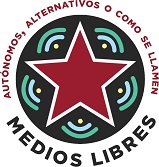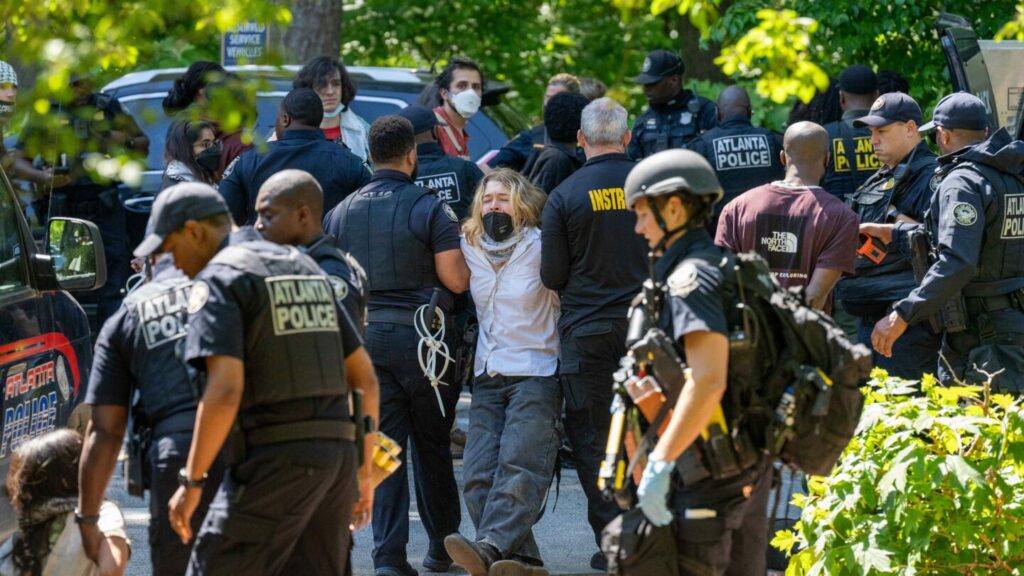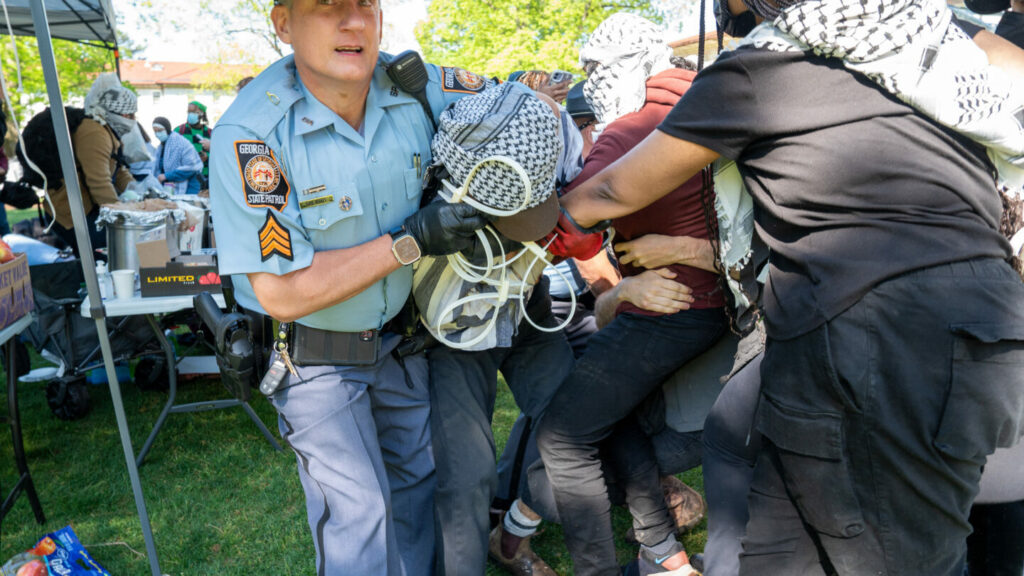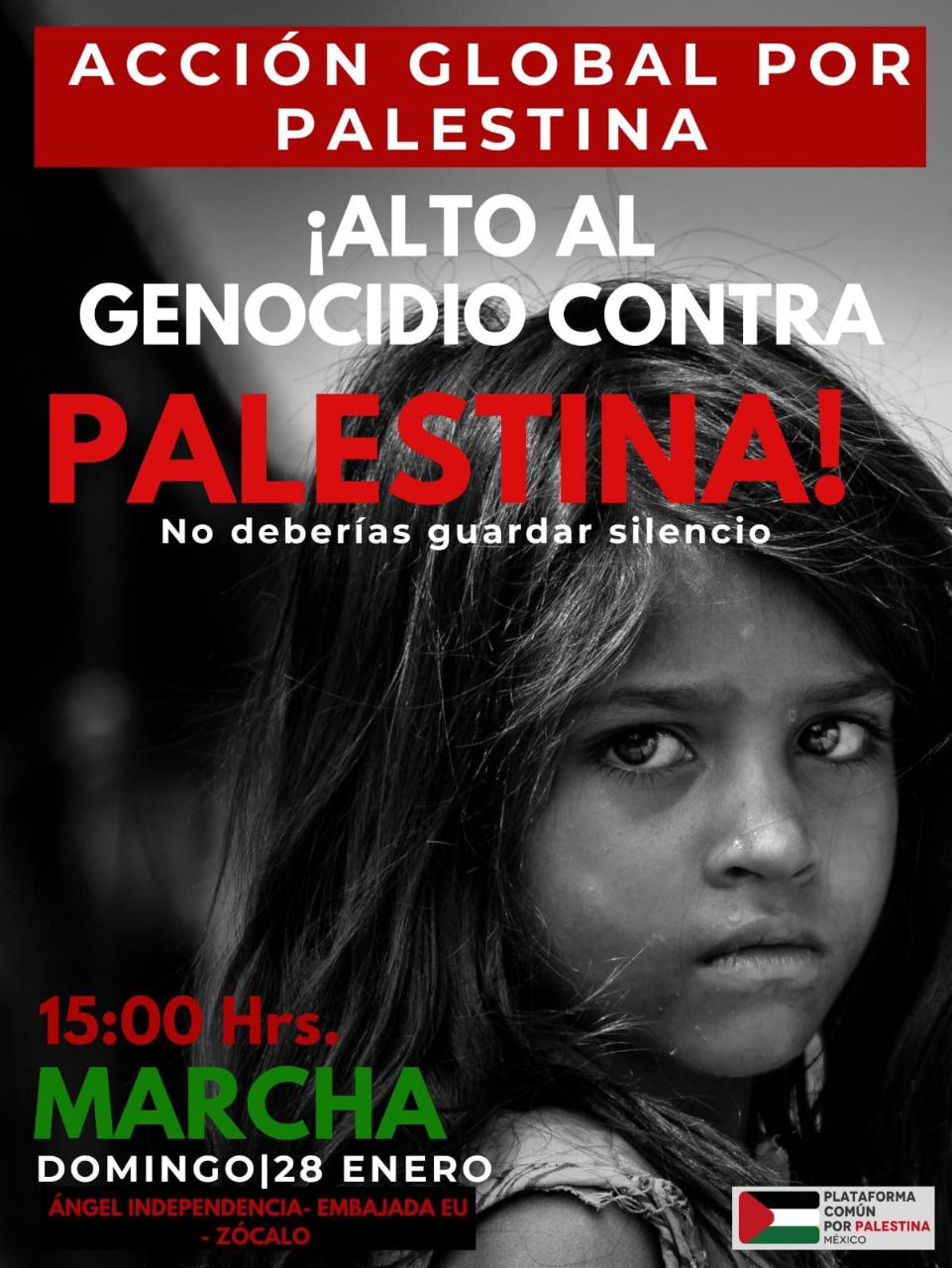Sorry, this entry is only available in Español. For the sake of viewer convenience, the content is shown below in the alternative language. You may click the link to switch the active language.
Ilustración Divina violencia de Mr. Fish
La autoinmolación de Aaron Bushnell fue, en última instancia, un acto religioso, que delimita radicalmente el bien y el mal y nos llama a resistir.
Aaron Bushnell, cuando colocó su teléfono celular en el suelo para realizar una transmisión en vivo y se prendió fuego frente a la embajada de Israel en Washington D.C., lo que resultó en su muerte, enfrentó la violencia divina contra el mal radical. Como miembro en servicio activo de la Fuerza Aérea de Estados Unidos, formó parte de la vasta maquinaria que sustenta el genocidio en curso en Gaza, no menos moralmente culpable que los soldados, tecnócratas, ingenieros, científicos y burócratas alemanes que lubricaron el aparato del Holocausto nazi. . Este era un papel que ya no podía aceptar. El murió por nuestros pecados.
“Ya no seré cómplice del genocidio”, dijo tranquilamente en su vídeo mientras caminaba hacia la puerta de la embajada. “Estoy a punto de participar en un acto extremo de protesta. Pero en comparación con lo que la gente ha estado experimentando en Palestina a manos de sus colonizadores, no es nada extremo. Esto es lo que nuestra clase dominante ha decidido que será normal”.
Hombres y mujeres jóvenes se alistan en el ejército por muchas razones, pero matar de hambre, bombardear y matar a mujeres y niños no suele ser una de ellas. ¿No debería, en un mundo justo, la flota estadounidense romper el bloqueo israelí de Gaza para proporcionar alimentos, refugio y medicinas? ¿No deberían los aviones de guerra estadounidenses imponer una zona de exclusión aérea sobre Gaza para detener los bombardeos de saturación? ¿No debería darse un ultimátum a Israel para que retire sus fuerzas de Gaza? ¿No deberían detenerse los envíos de armas y los miles de millones en ayuda militar e inteligencia proporcionados a Israel? ¿No deberían rendir cuentas quienes cometen genocidio, así como quienes lo apoyan?
Estas simples preguntas son las que la muerte de Bushnell nos obliga a enfrentar.
“A muchos de nosotros nos gusta preguntarnos”, publicó poco antes de suicidarse, “‘¿Qué haría si estuviera vivo durante la esclavitud? ¿O el Jim Crow Sur? ¿O apartheid? ¿Qué haría yo si mi país estuviera cometiendo genocidio? La respuesta es: lo estás haciendo. Ahora mismo.”
Las fuerzas de la coalición intervinieron en el norte de Irak en 1991 para proteger a los kurdos tras la primera Guerra del Golfo. El sufrimiento de los kurdos fue extenso, pero eclipsado por el genocidio en Gaza. Se impuso una zona de exclusión aérea para la fuerza aérea iraquí. El ejército iraquí fue expulsado de las zonas kurdas del norte. La ayuda humanitaria salvó a los kurdos del hambre, las enfermedades infecciosas y la muerte por exposición.
Pero esa era otra época, otra guerra. El genocidio es malo cuando lo llevan a cabo nuestros enemigos. Se defiende y sostiene cuando lo llevan a cabo nuestros aliados.
Walter Benjamin, cuyos amigos Fritz Heinle y Rika Seligson se suicidaron en 1914 para protestar contra el militarismo alemán y la Primera Guerra Mundial, en su ensayo “Crítica de la violencia”, examina los actos de violencia cometidos por individuos que enfrentan el mal radical. Cualquier acto que desafíe el mal radical viola la ley en nombre de la justicia. Afirma la soberanía y la dignidad del individuo. Condena la violencia coercitiva del Estado. Implica la voluntad de morir. Benjamin llamó a estos actos extremos de resistencia “violencia divina”.
“Sólo por el bien de los desesperados se nos ha dado esperanza”, escribe Benjamin.
La autoinmolación de Bushnell, una de las cuales la mayoría de las publicaciones en las redes sociales y las organizaciones de noticias han censurado fuertemente, es el punto. Está destinado a ser visto. Bushnell apagó su vida de la misma manera que miles de palestinos, incluidos niños, han sido extinguidos. Podríamos verlo quemarse hasta morir. Esto es lo que parece. Esto es lo que les sucede a los palestinos por nuestra culpa.
La imagen de la autoinmolación de Bushnell, como la del monje budista Thích Quảng Đức en Vietnam en 1963 o la de Mohamed Bouazizi, un joven vendedor de frutas en Túnez, en 2010, es un potente mensaje político. Saca al espectador de la somnolencia. Obliga al espectador a cuestionar suposiciones. Le ruega al espectador que actúe. Es teatro político, o quizás ritual religioso, en su forma más potente. El monje budista Thích Nhất Hạnh dijo de la autoinmolación: “Expresar la voluntad quemándose, por lo tanto, no es cometer un acto de destrucción sino realizar un acto de construcción, es decir, sufrir y morir por el bien de la autoinmolación de nuestra gente”.
Si Bushnell estuviera dispuesto a morir, gritando repetidamente “¡Palestina libre!” mientras ardía, entonces algo debía estar terriblemente mal.
Estos autosacrificios individuales a menudo se convierten en puntos de reunión para la oposición masiva. Pueden provocar, como lo hicieron en Túnez, Libia, Egipto, Yemen, Bahréin y Siria, levantamientos revolucionarios. Bouazizi, que estaba indignado porque las autoridades locales habían confiscado sus balanzas y sus productos, no tenía intención de iniciar una revolución. Pero las pequeñas y humillantes injusticias que soportó bajo el corrupto régimen de Ben Ali resonaron en un público abusado. Si pudiera morir, podrían salir a las calles.
Estos actos son nacimientos sacrificiales. Presagian algo nuevo. Son el rechazo total, en su forma más dramática, de las convenciones y los sistemas de poder reinantes. Están diseñados para ser horribles. Están destinados a sorprender. Quemarse vivo es una de las formas más temidas de morir.
La autoinmolación proviene de la raíz latina immolāre, espolvorear con harina salada al ofrecer una víctima consagrada para el sacrificio. Las autoinmolaciones, como la de Bushnell, vinculan lo sagrado y lo profano a través de la muerte sacrificial.
Pero llegar a este extremo requiere lo que el teólogo Reinhold Niebuhr llama “una locura sublime en el alma”. Señala que “nada más que esa locura luchará contra el poder maligno y la maldad espiritual en las altas esferas”. Esta locura es peligrosa, pero es necesaria cuando se enfrenta el mal radical porque sin ella “la verdad se oscurece”. El liberalismo, advierte Niebuhr, “carece del espíritu de entusiasmo, por no decir fanatismo, que es tan necesario para sacar al mundo de sus caminos trillados. Es demasiado intelectual y demasiado poco emocional para ser una fuerza eficiente en la historia”.
Esta protesta extrema, esta “locura sublime”, ha sido un arma potente en manos de los oprimidos a lo largo de la historia.
Las aproximadamente 160 autoinmolaciones en el Tíbet desde 2009 para protestar contra la ocupación china se perciben como ritos religiosos, actos que declaran la independencia de las víctimas del control del Estado. La autoinmolación nos llama a una forma diferente de ser. Estas víctimas del sacrificio se convierten en mártires.
Las comunidades de resistencia, incluso si son seculares, están unidas por los sacrificios de los mártires. Sólo los apóstatas traicionan su memoria. El mártir, a través de su ejemplo de abnegación, debilita y rompe los vínculos y el poder coercitivo del Estado. El mártir representa un rechazo total al status quo. Por eso todos los Estados buscan desacreditar al mártir o convertirlo en una no persona. Conocen y temen el poder del mártir, incluso en la muerte.
En 1965, Daniel Ellsberg fue testigo de cómo un activista pacifista de 22 años, Norman Morrison, se rociaba con queroseno y se prende fuego (las llamas se elevaban 10 pies en el aire) frente a la oficina del Secretario de Defensa, Robert McNamara, en el Pentágono. , para protestar contra la guerra de Vietnam. Ellsberg citó la autoinmolación, junto con las protestas contra la guerra en todo el país, como uno de los factores que lo llevaron a publicar los Papeles del Pentágono.
El sacerdote católico radical Daniel Berrigan, después de viajar a Vietnam del Norte con una delegación de paz durante la guerra, visitó la habitación del hospital de Ronald Brazee. Brazee era un estudiante de secundaria que se empapó con queroseno y se inmoló frente a la Catedral de la Inmaculada Concepción en el centro de Syracuse, Nueva York, para protestar contra la guerra.
“Todavía vivía un mes después”, escribe Berrigan. “Pude acceder a él. Olí el olor a carne quemada y entendí de nuevo lo que había visto en Vietnam del Norte. El niño agonizaba atormentado, su cuerpo como un gran trozo de carne arrojado a una parrilla. Murió poco después. Sentí que mis sentidos habían sido invadidos de una manera nueva. Había comprendido el poder de la muerte en el mundo moderno. Sabía que debía hablar y actuar contra la muerte porque la muerte de este niño se estaba multiplicando por mil en la Tierra de los Niños Ardientes. Entonces fui a Catonsville porque había ido a Hanoi”.
En Catonsville, Maryland, Berrigan y otros ocho activistas, conocidos como los Nueve de Catonsville, irrumpieron en una junta de reclutamiento el 17 de mayo de 1968. Tomaron 378 expedientes de reclutamiento y los quemaron con napalm casero en el estacionamiento. Berrigan fue sentenciado a tres años de prisión federal.
Estuve en Praga en 1989 para la Revolución de Terciopelo. Asistí a la conmemoración de la autoinmolación de un estudiante universitario de 20 años llamado Jan Palach. Palach se paró en las escaleras del Teatro Nacional en la Plaza Wenceslao en 1969, se echó gasolina encima y se prendió fuego. Murió a causa de sus heridas tres días después. Dejó una nota diciendo que este acto era la única forma que quedaba de protestar por la invasión soviética de Checoslovaquia, que había tenido lugar cinco meses antes. Su cortejo fúnebre fue disuelto por la policía. Cuando se llevaron a cabo frecuentes vigilias con velas en su tumba en el cementerio de Olsany, las autoridades comunistas, decididas a borrar su memoria, desenterraron su cuerpo, lo cremaron y entregaron las cenizas a su madre.
Durante el invierno de 1989, carteles con el rostro de Palach cubrieron las paredes de Praga. Su muerte, dos décadas antes, fue ensalzada como el acto supremo de resistencia contra los soviéticos y el régimen prosoviético instalado tras el derrocamiento de Alexander Dubček. Miles de personas marcharon hacia la Plaza de los Soldados del Ejército Rojo y la rebautizaron como Plaza Jan Palach. Ganó.
Un día, si se desmantelan el Estado corporativo y el Estado de apartheid de Israel, la calle donde Bushnell se prendió fuego llevará su nombre. Al igual que Palach, será honrado por su valentía moral. Los palestinos, traicionados por la mayor parte del mundo, ya lo consideran un héroe. Gracias a él, será imposible demonizarnos a todos.
La violencia divina aterroriza a una clase dominante corrupta y desacreditada. Expone su depravación. Ilustra que no todo el mundo está paralizado por el miedo. Es un canto de sirena para luchar contra el mal radical. Eso es lo que pretendía Bushnell. Su sacrificio habla de lo mejor de nosotros mismos.










